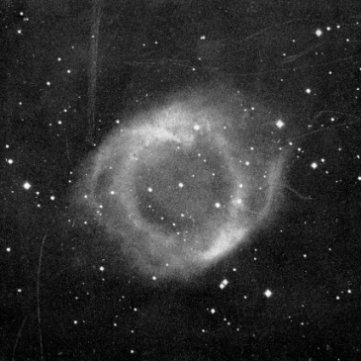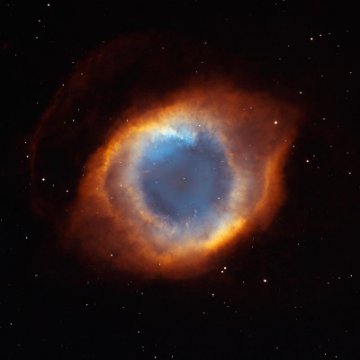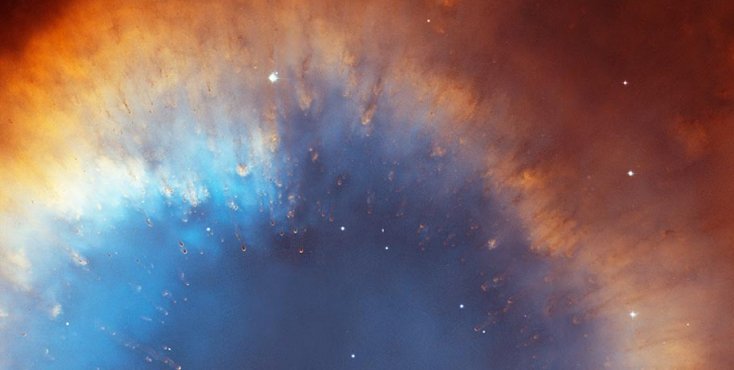NGC 7293
THE HELIX NEBULA
"A beautiful and remarkable object" (Curtis). The Helix Nebula,
NGC 7293 in southern Aquarius, is the
closest of the prominent planetary
nebulae. Its accurately measured distance of 715 light years
(from parallax, good to about 10 percent) allows the most detailed
view of nebular structure that we have. At upper left, even the
century-old Lick photograph shows a great deal of the intricate
structure. But it is no match for the spectacular images at upper
right and immediately above. These views, from a mosaic of ground-
based (from the National Optical Astronomy Observatories) and
Hubble images, show that the apparently smooth ring is actually
made of myriad dense "comet-like" filaments that point away from
the central star. These filaments, discovered in ground-based
photos made in the 1950s at Palomar, consist of dense, dust-filled
neutral knots ionized around the outside by the central star's
intense ultraviolet radiation, the ionized gas then streaming away
from the star. Similar structures are seen in the more-distant Dumbbell Nebula (NGC 6853). Though the Helix
appears to be made of a pair of interlocking rings, it is really
more of a barrel-shaped object, wherein we look down the barrel's
mouth.
The nebula is huge. At its extreme, it is 19 minutes of arc
across, 65 percent the angular size of the full Moon. At 715 light
years, that translates into a physical diameter of four light
years. The nebula would span the distance between us and Alpha Centauri. The resulting low
surface brightness makes the Helix quite difficult to see in a
small telescope. With a temperature around 110,000 Kelvin and a
luminosity some 200 times that of the Sun (most of it radiated in
the ultraviolet part of the
spectrum), the hot blue thirteenth
magnitude (13.4) central star is slowing dimming and cooling, and
is in effect a hot white
dwarf only a few times the size of Earth. Expanding at up to
25 kilometers per second, the nebula will eventually grow to
invisibility, leaving its white dwarf behind.
Upper left: Image and quote by H. D. Curtis from Publications of
the Lick Observatory, Volume 13, Part III, 1918. Upper right and
lower images: NASA, NOAO, ESA, the Hubble Heritage Team, M. Meixner
(STScI), and T. A. Rector (NRAO).





